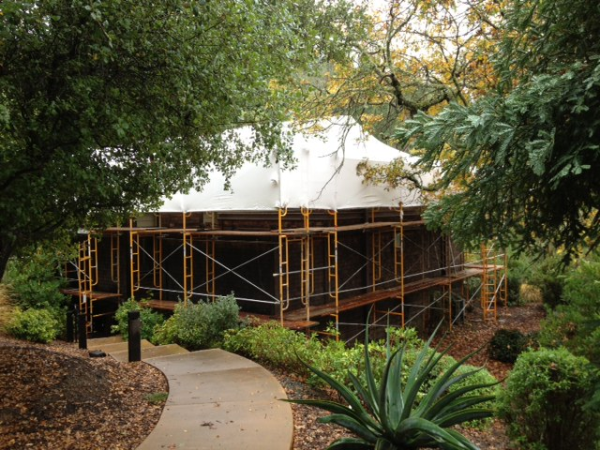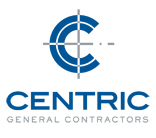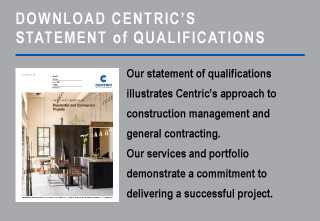Don’t let Jack Frost dampen your construction activities. Celebrate the season by learning the art of winter construction. There are many ways to approach building in wintery weather conditions. I’d like to share with you two construction techniques we’ve had great success with, which will allow you to continue building throughout the winter season.
The first winter construction technique employs the protection of a large high quality tent. The benefits of sheltering an active construction site under a tent include:
- The tent provides weeks/months of protection. A tent that is large enough to cover the project site footprint will allow your team to pour concrete, lay plumbing or really any activity that is shut down due to weather. Having a large covered area and proper erosion control plan, we have been able to perform site work excavation well after the county imposed grading moratorium. With the introduction of the Storm Water Pollution Prevention Plan (SWPPP), county inspectors have been able to work with us to maintain jobsite activity even through the harshest of conditions.
- The tent reduces costs associated with winter conditions. Construction delays due to winter weather conditions can drive up the overall project costs. Utilizing a construction tent will ensure happy clients by meeting all of your project deadlines.
- The tent enables scheduling consistency. Now that your jobsite is covered, there are no rain days. Weather is not a factor in the completion of any exterior work scheduled.

It is important to find a tent manufacturer who can fabricate a structure that will adequately secure your construction site. This will include pads and in some cases, depending on the size of the tent, piers to be placed in preparation for the tent erection. Once you have your tent in place, you will have an efficient jobsite, utilizing “normally” lost time and generating an overall improvement in the quality of construction during the rainy months. More importantly, building under the shelter of a tent is a boon for residential clients who are looking for an earlier “move in” date.
The second winter construction technique employs the use of shrink-wrap. While the tent technique covers a large area, the shrink-wrap enables you to protect specific areas within your active construction site so that you can work continuously without weather delay. Shrink-wrap provides tight containment and allows daylight into the work area. The benefits of shrink-wrapping an active construction site include:
- Shrink-wrap contains active construction environments. Shrink-wrap contains and weatherproofs specific areas of an active construction work environment.
- Shrink-wrap controls dust.Shrink-wrap reduces the likelihood of area contamination by keeping dust, debris, or pollutants away from harming a work environment. In addition to the protection from exterior elements, it will contain the same pollutants produced from polluting the rest of the jobsite.
- Shrink-wrap controls temperature. Along with providing a weatherproof barrier to a work environment, shrink-wrapped spaces create a climate controlled work space. Being able to control the variable of weather/temperature, you are able to complete sensitive finishes that would otherwise push a schedule to a “fair weather” time of year.

You will find that there are many applications for the shrink-wrap material that will help create the ideal weather protection for your site. These methods allow for an uninterrupted project schedule and an overall improvement in the quality of construction during the rainy months. The shrink-wrap technique has proven to be a great approach for boutique hotels and resorts looking to execute aggressive renovation construction schedules during their slower winter months. As you know… time is money!

